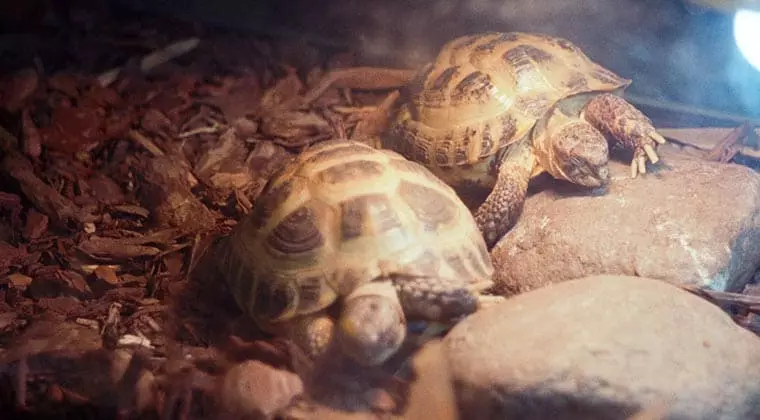Turtles are unique creatures that have adapted to their environment in many ways. One of their most distinctive features is their shell. It is made up of two parts, the carapace, which is the top part, and the plastron, which is the bottom part.
The shell protects the turtle’s vital organs and acts as a shield against predators. However, many people wonder if turtles sleep in their shells. In this article, we will explore this question and provide you with a comprehensive answer.
Anatomy of a Turtle’s Shell
Turtles are known for their unique feature: their shell. A turtle’s shell is a complex and fascinating structure that provides both protection and support. Let’s take a closer look at the anatomy of a turtle’s shell.
The shell is composed of two parts: the upper part, or carapace, and the lower part, or plastron. These two parts are connected by a bridge of bone called the bridge or the hinge. The carapace is made up of a series of bony plates called scutes, which are covered by keratin, the same material that makes up human hair and nails. The number and arrangement of scutes vary depending on the species of turtle.
Underneath the scutes of the carapace are the ribs, which are fused to the shell. The plastron is also composed of several bony plates and is connected to the carapace by ligaments. The plastron also has a central seam called the midline, which allows the turtle to retract its head, legs, and tail into the shell for protection.
Do Turtles Sleep in Their Shells?
Turtles do not sleep in the same way that humans do. They do not have a specific period of deep sleep, and they do not have a brain structure that allows them to enter into a state of unconsciousness.
However, turtles do need to rest, and they do so by reducing their activity level and becoming less responsive to their environment.
When turtles rest, they often tuck their head and limbs into their shell, which provides them with a sense of security. They can also close their eyes, which helps them to relax. Turtles can rest for extended periods, and during this time, their metabolism slows down, and their heart rate decreases.
Types of Resting in Turtles
Turtles have two types of rest, which are called quiescence and hibernation. Quiescence is a type of rest that occurs when turtles are inactive but still alert to their surroundings. During quiescence, turtles may not move, but they are still aware of their environment and can respond to it if necessary.
Hibernation is a type of rest that occurs when turtles are inactive for an extended period, usually during the winter months. During hibernation, turtles’ metabolism slows down significantly, and they become almost completely inactive. During hibernation, turtles retreat into their shells, and their heart rate and breathing slow down.
Factors Affecting Turtles Resting Behavior
Several factors can affect turtles’ resting behavior. These include their age, species, habitat, and time of year. Younger turtles tend to be more active than older turtles and may need to rest less frequently. Different species of turtles also have different resting requirements.
Turtles that live in water may rest differently than those that live on land. The time of year can also affect turtles’ resting behavior. During the winter months, when the temperature drops, turtles may become less active and rest more frequently.
Conclusion
We have explored the topic of whether turtles sleep in their shells. Through our research, we have found that while turtles do retreat into their shells for protection, they do not actually sleep inside of them. Instead, they find secure areas to rest where they can still remain alert to potential dangers.
We have discussed the importance of proper rest and sleep for turtles, as well as the role that their environment plays in their ability to get the rest they need. We have also highlighted the fascinating adaptations and behaviors of these unique creatures that allow them to thrive in a variety of habitats.
FAQs
Turtles can rest for extended periods, sometimes up to several days.
No, turtles cannot sleep while swimming. They need to come up to the surface to breathe.
Turtles can rest at any time of day or night, depending on their species and habitat.
Turtles can rest in various positions, but they often tuck their head and limbs into their shell.
Yes, turtles can rest on both land and in water.
